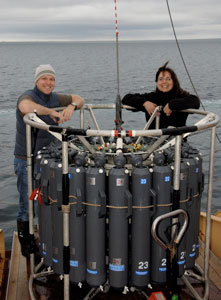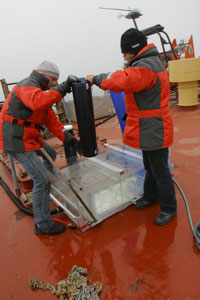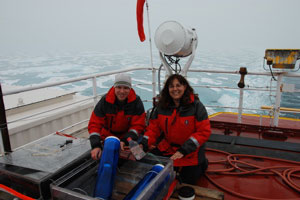Ian Wrohan, University of VictoriaAugust 28, 2007
Phytoplankton play a critical role in the cycling of elements in the ocean by taking up dissolved nutrients containing carbon and nitrogen, and returning them back to seawater upon their death and decomposition. Phytoplankton physiology is then responsible for changes in the carbon balance in the upper water column, which in turn influences atmospheric CO2 concentrations and modifies global climate. Studying the rate at which phytoplankton take nutrients from the water column provides a snapshot of the efficiency of carbon export to deeper water as cells die and sink out of the surface waters. Communities that display high rates of "new production", that is growth utilizing nitrogen in the form of nitrate, can be used as an indicator of a net vertical flux of organic matter out of the euphotic zone. High rates of new production are normally attributed to algae called diatoms which also contribute significantly to the downward flux of biogenic silica. In contrast, high rates of "regenerate primary production" (ammonium and urea-based) are generally indicative of low export rates and the presence of phytoplankton assemblages characterized by small cells (less of a diatom contribution). To determine nitrogen uptake rates, on-deck incubators are used to simulate the light and temperature conditions found from the ocean’s surface down to a depth of around 100 meters depending on the physical characteristics of the water being sampled. Live cultures drawn from these depths are inoculated with a chemical tracer and grown for 24 hours to allow phytoplankton to take up these chemicals along with those found naturally in the water column. These samples are then frozen for later analysis.
Last updated: October 7, 2019 | |||||||||||||||||||||
Copyright ©2007 Woods Hole Oceanographic Institution, All Rights Reserved, Privacy Policy. | |||||||||||||||||||||






